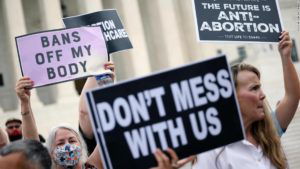
Liposuction is Deadlier Than People Realize Cautions Cleveland Medical Malpractice Lawyer
Nov 30, 2012
Cleveland, OH (Law Firm Newswire) November 29, 2012 – Many people believe that nothing can go wrong with liposuction and other cosmetic procedures.
People generally believe these procedures are universally safe because they are elective and not done because someone is sick or has an underlying medical problem. Nothing could be further from the truth. What seems like a simple surgery to get fat sucked out of your body could result in death.
“People think getting liposuction is easy, safe and fairly routine these days. It is anything but, and they need to know it could cost them their lives. The main problem, aside from the untold side-effects no one seems to want to discuss, is the media reports about the svelte bodies ‘after’ liposuction,” said Christopher Mellino, a Cleveland medical malpractice lawyer of Mellino Robenalt LLC, in Ohio.
Twenty-five years ago, plastic surgeons were thrilled to discover they could perform liposuction. Back then there were concerns about the procedures safety. Those concerns have not changed. In fact, they have escalated in light of the alarming “size” of a great number of Americans looking to shed fat without dieting.
The plain fact is that liposuction is “surgery,” and it is not simple. All surgeries carry a level of risk. An anesthesia accident can happen in any surgery that requires you to be either sedated or put to sleep. However liposuction carries many risks that cause patients to die at a higher rate than other surgeries. “One of those risks is high-volume tumescent anesthesia. The levels can get dangerously high in a short period of time,” Mellino added.
Liposuction hazards include ripped tissue that holds the fat cells, releasing those cells into the blood stream, where the fat emboli make their way to the lungs and heart. The local anesthetic used during this procedure, typically lidocaine, is extremely risky, due to the high amount injected, which may result in anesthetic systemic toxicity. Levels may vary between 6.4 mcg/mL to as high as 13 mcg/mL.
Other injuries sustained as a result of anesthesia complications are medication mistakes, delayed diagnosis of anaphylaxis, difficulties on intubation, improper ventilation/oxygenation and burns from the hot water bottles used to keep the patient warm. Official causes of death as a result of undergoing liposuction include venous emboli, fat emboli, coronary artery disease and drug intoxication, which includes the sedatives and lidocaine used for the procedure.
“Cosmetic surgeons, as opposed to board-certified plastic surgeons, are not monitored or regulated. This leaves the door wide open for medical malpractice,” Mellino added.
To learn more or to contact a Cleveland medical malpractice attorney, or visit http://www.mellinorobenalt.com.
Mellino Robenalt LLC
200 Public Sq., Suite 2900
Cleveland, Ohio 44114
Call: (216) 241-1901




